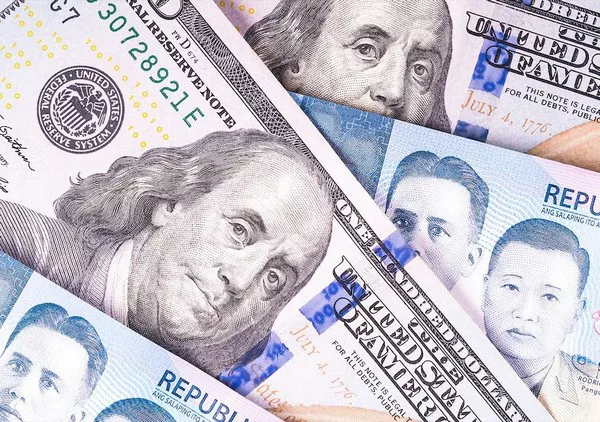Quantitative Easing (QE) is a monetary policy tool employed by central banks, including the U.S. Federal Reserve, to stimulate economic growth and combat deflationary pressures. First introduced in the aftermath of the 2008 financial crisis, QE has become a key instrument in the central bank’s toolkit. In this article, we will delve into the intricacies of QE and explore its impact on the U.S. dollar, the cornerstone of global currency markets.
Quantitative Easing Defined:
Quantitative Easing is a non-conventional monetary policy tool that involves a central bank purchasing financial assets, typically long-term government securities and, in some cases, private sector securities. The goal is to increase the money supply, lower interest rates, and encourage lending and investment in the broader economy.
Objectives of QE:
Boosting Economic Activity: By injecting money into the financial system, QE aims to lower long-term interest rates, making borrowing more attractive for businesses and consumers. This, in turn, stimulates spending, investment, and economic growth.
Fighting Deflationary Pressures: QE is often employed in situations where traditional monetary policy tools, like lowering the short-term interest rate, have become less effective. It is particularly useful in combating deflationary risks by increasing inflation expectations.
Supporting Financial Markets: QE can have a positive impact on financial markets by reducing yields on government securities, which tends to drive investors toward riskier assets, such as stocks and corporate bonds.
The Mechanics of Quantitative Easing:
Asset Purchases:
The central bank initiates QE by purchasing a predetermined amount of financial assets, typically government bonds, from the open market. This infusion of capital into the financial system is intended to stimulate economic activity.
Increasing Reserves:
When the central bank buys securities from financial institutions, it credits the accounts of these institutions with additional reserves. This increase in reserves provides banks with more liquidity, making it easier for them to lend to businesses and individuals.
Lowering Long-Term Interest Rates:
By actively purchasing long-term securities, the central bank aims to reduce long-term interest rates. Lower rates incentivize borrowing and investment, spurring economic activity.
Influencing Expectations:
A crucial aspect of QE is its impact on expectations. The central bank signals its commitment to maintaining accommodative monetary policy, influencing market expectations about future interest rates and economic conditions.
Impact of Quantitative Easing on the US Dollar:
Interest Rate Differentials:
One of the primary channels through which QE affects the U.S. dollar is the influence on interest rate differentials. When a central bank implements QE and lowers long-term interest rates, it can lead to a reduction in the interest rate differentials between the U.S. and other economies. Investors may seek higher yields in other currencies, resulting in a depreciation of the U.S. dollar.
Global Capital Flows:
QE in the United States can have global implications due to the interconnected nature of financial markets. As the Federal Reserve purchases assets, it increases the supply of U.S. dollars in the global financial system. This abundance of dollars can lead to increased demand for higher-yielding assets denominated in other currencies, contributing to a weaker U.S. dollar.
Risk Appetite and Carry Trades:
QE tends to boost risk appetite in financial markets. As central banks flood the system with liquidity, investors may be more inclined to pursue higher returns in riskier assets globally. This can result in the unwinding of carry trades, where investors borrow in low-yielding currencies (like the U.S. dollar) to invest in higher-yielding assets elsewhere.
Inflation Expectations:
QE is often associated with efforts to combat deflationary pressures. If successful, it can lead to higher inflation expectations. In the context of a global economy, an increase in U.S. inflation expectations relative to other regions may contribute to a weaker U.S. dollar.
Market Perception and Forward Guidance:
The U.S. dollar can also be influenced by market perception and forward guidance provided by the Federal Reserve during QE programs. Clarity in communication about the central bank’s intentions, the duration of QE programs, and potential exit strategies can impact how market participants view the U.S. dollar.
Safe-Haven Dynamics:
While QE may generally contribute to a weaker U.S. dollar, there are instances when the U.S. currency strengthens. During times of global economic uncertainty or financial market turmoil, the U.S. dollar often serves as a safe-haven currency. Investors seeking safety may flock to the U.S. dollar, offsetting the depreciation pressures induced by QE.
Challenges and Considerations:
Unintended Consequences:
While QE aims to stimulate economic activity, it can also lead to unintended consequences. Excessive liquidity in financial markets may contribute to asset price inflation, creating concerns about the formation of speculative bubbles.
Dependency on Monetary Policy:
Overreliance on monetary policy tools, including QE, raises questions about the broader economic framework. Critics argue that sustained reliance on these measures may mask underlying structural issues in the economy and hinder the effectiveness of traditional monetary policy.
Global Coordination:
Given the interconnectedness of global financial markets, the impact of QE extends beyond domestic borders. Coordination among major central banks is crucial to avoiding disruptions and imbalances in the global economy.
See Also: What Is Quantitative Tightening (QT) & Its Impact on the USD
Conclusion:
Quantitative Easing has emerged as a powerful tool in the central bank’s arsenal, wielded to address economic challenges and foster growth. While its primary impact is felt on interest rates, economic activity, and inflation, QE also reverberates through currency markets, influencing the value of the U.S. dollar. The dynamic interplay between QE and the U.S. dollar underscores the complexities of global monetary policy and the need for a nuanced understanding of these interactions by policymakers, investors, and market participants alike. As the economic landscape continues to evolve, the role of QE in shaping the U.S. dollar’s trajectory remains a critical aspect of the broader narrative in the realm of international finance.


